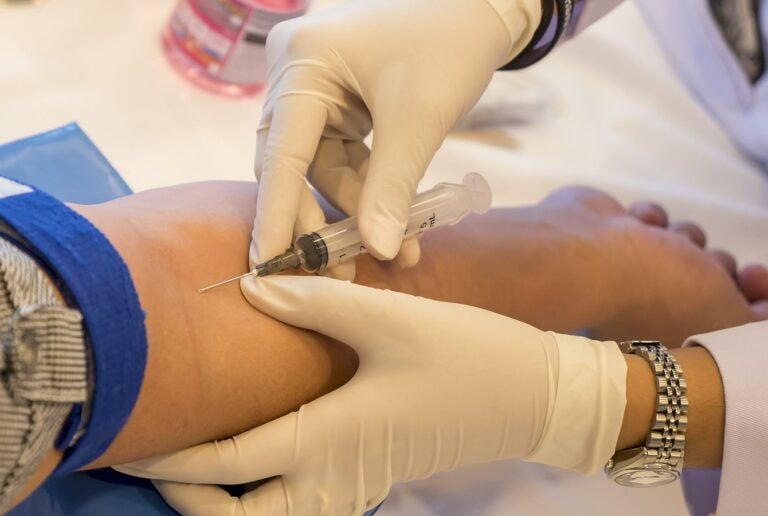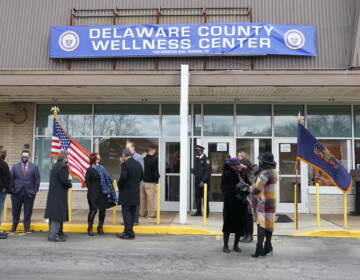What’s behind Philadelphia’s soaring STI rates?
Younger people, between the ages of 15 and 24, have some of the highest rates of infection.

STI rates have been on the rise in Philadelphia. (npstockphoto/BigStock)
From Philly and the Pa. suburbs to South Jersey and Delaware, what would you like WHYY News to cover? Let us know!
STI Awareness Week, which ends April 20, has put a renewed spotlight on Philadelphia’s status as first in the country when it comes to sexually transmitted infection rates. That’s according to a study released earlier this year, based on CDC data comparing the STI rates of 100 cities nationwide.
Philadelphia has hovered in the top five for several years, ranking fifth in 2023.
So what’s behind Philadelphia’s soaring STI rates, and what is the city doing about it?
Causes of rising STIs
The city did not make any health officials available for comment, but Dr. Judy O’Donnell, an epidemiologist and Chief of Infectious Diseases at Penn Presbyterian Medical Center, has spent years tracking STIs in Philadelphia.
“There are just harder-to-reach populations,” O’Donnell said, “and that can really contribute to the stubbornness of these infections from being tackled effectively and from preventing transmission.”
Most notably, in recent years, COVID-19 has hindered access to prompt medical care, driving up STI rates nationwide.
In addition to the pandemic, O’Donnell says that factors related to social determinants of health have also contributed to rising rates in Philadelphia.
“Poverty plays a role here, age plays a role, certain racial and ethnic minority groups may have higher barriers in terms of access to health care, and then gay and bisexual males can also be at higher risk,” she said. “It has to do with groups that are more vulnerable, groups who have less access to health care in general, and people feeling stigmatized in some ways about getting tested for STDs.”
Younger people, between the ages of 15 and 24, have some of the highest rates — in part, O’Donnell said, because they’re less likely to have other health problems that would cause them to seek out medical care, or they may feel embarrassed about discussing their sexual health.
“I would say that in general, young folks make up the vast majority of the positive results we’re seeing,” said Sam Wilburn, a nurse practitioner at the Mazzoni Center, a nonprofit focused on Philadelphia’s LGBTQ community that offers medical and wellness services, including STI testing and treatment. “While it is obviously not good to hear that we are a city with the highest rate of STIs in the country, there is certainly a lot of opportunity there in terms of thinking about how people engage with health care, which is to say, that that age bracket also usually doesn’t have a primary care provider. And if we can use this as an opportunity to think about it as a chance to get people just more involved in their health care period, then I think we could see a lot of positive change.
STIs of greatest concern
One of the STIs public health experts are most concerned about right now, O’Donnell says, is syphilis, which has seen an alarming rise, both locally and nationwide, in recent years — increasing by 80 percent nationwide between 2018 and 2022 and by 937 percent among newborn babies over the past decade.
“It used to be very unusual to see a baby with congenital syphilis in Philadelphia or in the state of Pennsylvania and we are now seeing babies with congenital syphilis,” O’Donnell said. “Unfortunately, when we see congenital syphilis, that means that the mother did not have timely prenatal care, transmitted that infection in utero and then the baby is born with this infection and that’s a preventable disease that’s a huge missed opportunity because congenital syphilis in babies is potentially devastating.”
Sam Wilburn says he’s seen high rates of chlamydia and gonorrhea among his patients, but added that HIV has also surged following the start of the pandemic.
“I think a lot of folks were on PrEP before, which is that medical intervention to prevent HIV,” Wilburn said. “And because people were having a lot less sex in 2020, just because nobody was supposed to be leaving the house, a lot of people ended up going off of PrEP. So if there was anything that I saw that surprised me, it was actually a bit more HIV in 21, 22, and 23 than I would have expected.”
Some public health officials are concerned that the spread of HIV and other bloodborne STIs, like syphilis, could get worse before they get better, following an announcement by the mayor’s office to cut almost $1 million in funding to Prevention Point, a Kensington-based harm reduction and social services nonprofit that runs a needle exchange program, providing sterile syringes to people who use drugs.
City response
Despite soaring numbers, O’Donnell says the city Department of Public Health has been doing a decent job dealing with STIs.
“Our health department has been trying to tackle this problem, and they have free access to testing, walk-in clinics, free access to condoms, condom programs, programs to try to prevent HIV infection, and more recently, some newer programs to try to prevent the bacterial sexually transmitted infections like gonorrhea and chlamydia. But I don’t know that the information is getting out to the most vulnerable populations where this could be of biggest benefit.”
One of the city’s most important initiatives is its long-running STD Control Program, which tries to interrupt transmission of STIs, and especially syphilis, by tracking down the partners of people diagnosed with STIs and getting them into treatment.
Still, O’Donnell says, one of the biggest hurdles the city faces is a lack of awareness about the resources it has to offer.
“That’s always a hard thing,” she said. “How do you get into the communities and make sure that individuals know that they are at risk, and that there’s free confidential care that they can access throughout the city in many places?”
Sam Wilburn says both awareness and access both need to be improved.
“I think in general, just access and education is really lacking. I do think us having the highest rate is absolutely reflective of a public health issue and a policy issue,” he said. “The fact that people don’t know that you can get free testing at health centers one and two, the fact that it’s not necessarily available at every health center — I think we need to work really hard to engage young folks to establish medical care, because it does go beyond just sexual health.”
Overcoming misconceptions about testing
A final hurdle to curbing STIs, Wilburn said, are the fears and misconceptions that surround testing.
“The biggest piece is always that reminding folks that the test does not create the result,” he said. “So whatever the results of your tests are is the result, regardless of whether or not you know it, and it is always better to know. So while the anxiety about getting tested is valid, there is so much more that can be done when you know what’s going on versus when you don’t.”
O’Donnell and Wilburn say that young people, especially, should make an effort to get tested, even if they’re not experiencing symptoms.
“You’re not going to have symptoms all the time,” O’Donnell said. “Once you have symptoms, yes, you want to go get screened, but it’s important to have a dialogue with your health care provider so that you can get screened as part of your routine health care, especially if you’re not in a long-term monogamous relationship.”
O’Donnell added that those in monogamous relationships should also get tested, since STIs can still be present from encounters that happened months before or even years earlier.
Wilburn recommends that people with new partners on a monthly basis get tested regularly, at least once every three months.
He added that it’s important for patients to request specific STI tests for different parts of their bodies.
“Some folks will just get a blood draw and think that’s sufficient, but you’re not actually testing for gonorrhea and chlamydia with a blood draw,” Wilburn said. “Some people will just pee in a cup, but if they’re having oral or anal sex, we’re not capturing those positive results.”
For example, patients should ask for HIV, syphilis, gonorrhea, and chlamydia tests in every orifice that they use for sex.
“So I want to get tested for oral and anal gonorrhea, or urethral gonorrhea and chlamydia, and then syphilis and HIV are just through the blood draw,” Wilburn said. “So really trying to encourage specifics, because I think the other problem here is that there is just fear of talking about sex in health care, which is such a shame because it is such a part of our lives.”
Free STI testing is available at the Mazzoni Center, Health Center 1, Bebashi, Congreso de Latinos Unidos, and Courage. More information is available here.

Get daily updates from WHYY News!
WHYY is your source for fact-based, in-depth journalism and information. As a nonprofit organization, we rely on financial support from readers like you. Please give today.





